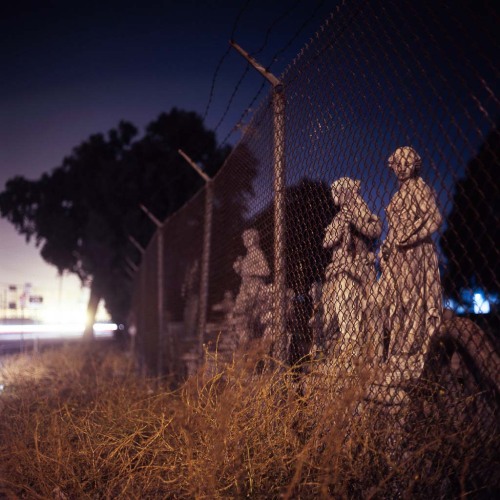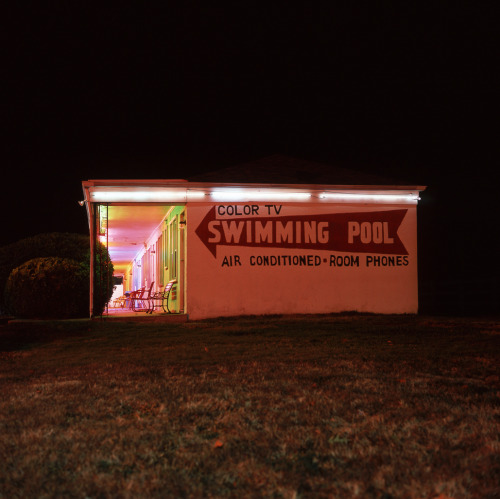I Find Everything Poetic, And It’s In The Corners Of My Heart Which Are Sometimes Mysterious That I
I find everything poetic, and it’s in the corners of my heart which are sometimes mysterious that I catch a glimpse of poetry… I feel a sensation that leads me into a poetic state…
Paul Gauguin, “Letter to Vincent van Gogh,” 8 Sept. 1888 (via paulgauguin-art)
More Posts from Theidlerhour and Others

Hundreds of you sent in questions for my live conversation with three astronauts and NASA’s chief scientist on Tuesday. Thanks! The most common question was: “What happens when you get your period in space?”
I didn’t end up asking this question because
a) the question itself has a lot of historical baggage b) the answer is pretty boring
But because people seemed genuinely curious, I decided to answer it here.
First, a bit of history…
In the early days of space flight, menstruation was part of the argument that women shouldn’t become astronauts.
Some claimed (1) that menstruation would effect a woman’s ability, and blamed several plane crashes on menstruating women. Studies in the 1940s (2,3) showed this was not the case. Female pilots weren’t impaired by their periods. But the idea wouldn’t die. In 1964, researchers from the Women in Space Program (4) still suggested (without evidence) that putting “a temperamental psychophysiologic human” (i.e. a hormonal woman) together with a “complicated machine” was a bad idea.
Others raised concerns about hypothetical health risks. They feared that microgravity might increase the incidence of “retrograde menstruation.” Blood might flow up the fallopian tubes into the abdomen, causing pain and other health problems. No one actually did any experiments to see if this really would be a problem, so there wasn’t any data to support or refute these fears.
Advocates for women in space argued that there had been a lot of unknowns when humans first went to space, but they sent men up anyway. Rhea Seddon, one of the first six women astronauts at NASA, recalled during an interview:
We said, “How about we just consider it a non-problem until it becomes a problem? If anybody gets sick in space you can bring us home. Then we’ll deal with it as a problem, but let’s consider it a non-problem.”
Just to give you a sense of the culture surrounding female astronauts back then, here’s an excerpt of a 1971 NASA report about potential psychological problems in space. Researchers Nick Kanas and William Fedderson suggest there might be a place for women in space:
The question of direct sexual release on a long-duration space mission must be considered. Practical considerations (such as weight and expense) preclude men taking their wives on the first space flights. It is possible that a woman, qualified from a scientific viewpoint, might be persuaded to donate her time and energies for the sake of improving crew morale; however, such a situation might create interpersonal tensions far more dynamic than the sexual tensions it would release.
Kanas, now an emeritus professor of psychology at UCSF, told me this was tongue-in-cheek — part of a larger discussion about the problem of sexual desire in space (5). Still, it’s surprising this language was included in an official NASA memorandum. Even advocates for women in space were caught up in this kind of talk. In a 1975 report for the RAND corporation, Glenda Callanen argues that women have the strength and intelligence to become astronauts. But here’s how she begins the report’s conclusion:
It seems inevitable that women are to be essential participants in space flight. Even if they were only to take on the less scientific parts of the space mission, or if they wished only to help “colonize” distant planets, their basic skills must still prepare them to perform countless new tasks.
In a culture where these statements were unremarkable, it’s easy to imagine that questions about menstruation weren’t purely motivated by scientific curiosity.
In 1983, 22 years after Alan Shepard became the first American to go to space, Sally Ride left earth’s atmosphere. She told an interviewer:
I remember the engineers trying to decide how many tampons should fly on a one-week flight; they asked, “Is 100 the right number?” “No. That would not be the right number.”
So what DOES happen when you get your period in space?
The same thing that happens on Earth! In the last three decades of female space flight, periods in space have been normal — no menstrual problems in microgravity.
Notes:
RE Whitehead, MD. “Notes from the Department of Commerce: Women Pilots.” The Journal of Aviation Medicine 5 (Mar-Dec 1934):48.
RS Holtz, MD. “Should Women Fly During the Menstrual Period?” The Journal of Aviation Medicine 12 (Sept 1941):302.
J Cochrane. “Final Report on Women Pilot Program.” 38.
JR Betson and RR Secrest. “Prospective women astronauts selection program.” American Journal of Obstetrics and Gynecology 88 (1964): 421–423.
Kanas and Fedderson’s 1971 report went on to conclude: “Information regarding women during periods of stress is scanty. This lack, plus previously mentioned problems, will make it difficult for a woman to be a member of the first long-duration space missions. However, it is just as unlikely to think that women cannot adapt to space. Initial exploration parties are historically composed of men, for various cultural and social reasons. Once space exploration by men has been successfully accomplished, then women will follow. In preparation for this, more information should be compiled regarding the physiology and psychology of women under stressful situations.”

fav japanese vine so far












A group of researchers have trained pigeons to identify malignant breast tissue in exchange for pigeon pellets. Here’s the real, not made up study.
This doesn’t mean hospitals will start employing pigeons. But it does suggest that studying pigeons could help us teach doctors how to process medical images. From the study:
Pigeons (Columba livia)—which share many visual system properties with humans—can serve as promising surrogate observers of medical images, a capability not previously documented.
… The birds’ successes and difficulties suggest that pigeons are well-suited to help us better understand human medical image perception, and may also prove useful in performance assessment and development of medical imaging hardware, image processing, and image analysis tools.
Image credit: Levenson et. al.

it’s easy to sit from your balcony of privilege & look down upon the masses, ignorant of why they’re angry.
it’s easy to sit under a shelter because you’re protected by privilege & wonder why the masses complain that they’re fed up with the rain.
it’s easy to sit in your warm house with state of the art equipment & wonder why people constantly complain that they’re left out in the cold
it’s easy to celebrate because your crops have yielded a high amount & question why other people complain, unaware that they weren’t given enough seeds. unaware that it barely ever rains here… the sun doesn’t even shine here…
it’s easy to be blinded by privilege. to remain neutral in situations of oppression simply because you are unaffected. but to remain neutral, is to strengthen the power of the oppressor.
— @beeyroyce
I know we can’t build anything just by sitting in the dark together, but I am so fond of you it sounds like something a person would lie about.
Anna Meister, “Not Yr Cornfield,” published in Moonsick Magazine (via bostonpoetryslam)
I no longer think she’s just being nice. She’s being kind. Which is much more a sign of character than mere niceness. Kindness connects to who you are, while niceness connects to how you want to be seen.
David Levithan, Every Day (via wordsnquotes)

Nothing could make me more curious about your taxidermy than this.
-
 stuffsomedeep reblogged this · 3 months ago
stuffsomedeep reblogged this · 3 months ago -
 aram22 liked this · 4 months ago
aram22 liked this · 4 months ago -
 lamadhousewife liked this · 4 months ago
lamadhousewife liked this · 4 months ago -
 darkzonez liked this · 4 months ago
darkzonez liked this · 4 months ago -
 dmitriandreivitch reblogged this · 4 months ago
dmitriandreivitch reblogged this · 4 months ago -
 dmitriandreivitch liked this · 4 months ago
dmitriandreivitch liked this · 4 months ago -
 milyaket reblogged this · 4 months ago
milyaket reblogged this · 4 months ago -
 icdcoffee reblogged this · 6 months ago
icdcoffee reblogged this · 6 months ago -
 f0und-the-devil-in-me liked this · 6 months ago
f0und-the-devil-in-me liked this · 6 months ago -
 stonehsstuff liked this · 7 months ago
stonehsstuff liked this · 7 months ago -
 silver-haired-wolf liked this · 7 months ago
silver-haired-wolf liked this · 7 months ago -
 ilmi0labirint0 liked this · 7 months ago
ilmi0labirint0 liked this · 7 months ago -
 transslavia reblogged this · 7 months ago
transslavia reblogged this · 7 months ago -
 chixk reblogged this · 10 months ago
chixk reblogged this · 10 months ago -
 the-hearth-and-the-wild liked this · 1 year ago
the-hearth-and-the-wild liked this · 1 year ago -
 keatsonthebeach liked this · 1 year ago
keatsonthebeach liked this · 1 year ago -
 unameden liked this · 1 year ago
unameden liked this · 1 year ago -
 vitamin-sea-mia liked this · 1 year ago
vitamin-sea-mia liked this · 1 year ago -
 shisasan liked this · 1 year ago
shisasan liked this · 1 year ago -
 seima-tenshi reblogged this · 1 year ago
seima-tenshi reblogged this · 1 year ago -
 seima-tenshi liked this · 1 year ago
seima-tenshi liked this · 1 year ago -
 murad-34 liked this · 1 year ago
murad-34 liked this · 1 year ago -
 koinoyokan1982 reblogged this · 1 year ago
koinoyokan1982 reblogged this · 1 year ago -
 koinoyokan1982 liked this · 1 year ago
koinoyokan1982 liked this · 1 year ago -
 etoile-ame liked this · 1 year ago
etoile-ame liked this · 1 year ago -
 creature-ofthenightarisen reblogged this · 1 year ago
creature-ofthenightarisen reblogged this · 1 year ago -
 creature-ofthenightarisen liked this · 1 year ago
creature-ofthenightarisen liked this · 1 year ago -
 zoeflake reblogged this · 1 year ago
zoeflake reblogged this · 1 year ago -
 misaelsmelancholicmisery liked this · 1 year ago
misaelsmelancholicmisery liked this · 1 year ago -
 420-babygirll reblogged this · 1 year ago
420-babygirll reblogged this · 1 year ago -
 420-babygirll liked this · 1 year ago
420-babygirll liked this · 1 year ago -
 armies-of-hell liked this · 1 year ago
armies-of-hell liked this · 1 year ago -
 likeaneyeinthedark reblogged this · 1 year ago
likeaneyeinthedark reblogged this · 1 year ago -
 likeaneyeinthedark liked this · 1 year ago
likeaneyeinthedark liked this · 1 year ago -
 demprosa liked this · 1 year ago
demprosa liked this · 1 year ago -
 mickpro reblogged this · 1 year ago
mickpro reblogged this · 1 year ago -
 thaida-quintus-amat liked this · 1 year ago
thaida-quintus-amat liked this · 1 year ago -
 caffeinetaurus liked this · 1 year ago
caffeinetaurus liked this · 1 year ago -
 heavne reblogged this · 1 year ago
heavne reblogged this · 1 year ago -
 leviseyeliner liked this · 1 year ago
leviseyeliner liked this · 1 year ago -
 osbusin reblogged this · 1 year ago
osbusin reblogged this · 1 year ago -
 burningjellyfishprince liked this · 1 year ago
burningjellyfishprince liked this · 1 year ago -
 legitimately liked this · 1 year ago
legitimately liked this · 1 year ago
"To awaken my spirit through hard work and dedicate my life to knowledge... What do you seek?"
229 posts